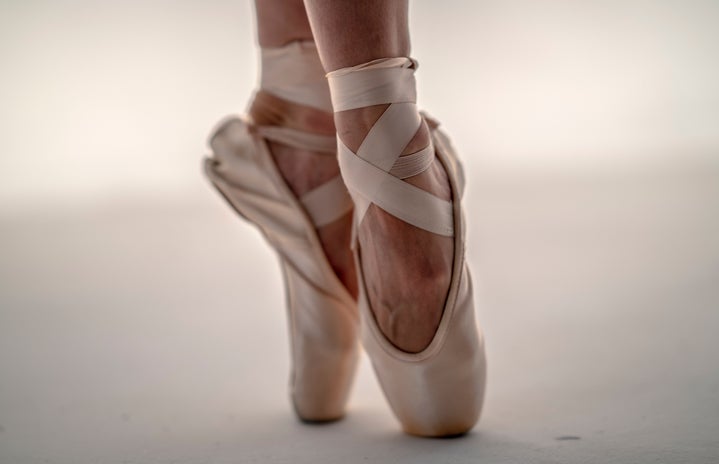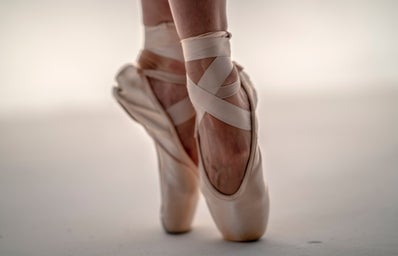Warning: This article contains mentions of body dysmorphia and eating disorders, which can be triggering for some readers. Reader discretion is advised.
I used to hate mirrors. Coming face to face with my own reflection always made me uneasy. It feels like standing parallel to a stranger as I let my critical eyes pick apart every aspect or potential flaw of her being, mercilessly cutting down her appearance. She lacked a thigh gap, her untoned curves seamlessly magnified her wide ribcage, accompanied by a waist three centimeters too wide for her liking, and a pair of large, drooping breasts accessorized with dark purple streaks engraved on her pale skin. I could list one hundred more things I loathed about my body before I completely stripped myself of all self-awareness and could no longer recognize the person I was looking at in the mirror. My perception of myself becomes warped. I lose possession of all the parts of myself I do love: my genuine smile, my long curly locks, and my crinkled brown eyes. I slowly fade away until I am left tangled in a perpetual cycle of self-deprecation. And so dimming my bathroom lights every time I would go use it became part of my daily ritual before I started shutting them off entirely because I began to favor the dark over my own image.
Body Dysmorphic Disorder: “a distinct mental disorder in which a person is preoccupied with an imagined physical defect or a minor defect that others often cannot see.” As time and maturity have brought me perspective, I began to realize that this phenomenon was a commonality. Body dysmorphia wasn’t merely just a trick of the eye, it was a real, chronic condition. And I suffered from it.
Funnily enough, I willingly chose to be surrounded by room-length mirrors during my most vulnerable developmental years. I participated in the one art form that celebrates thinness and values perfectionism over anyone’s mental and physical well-being: ballet. Long story short, it broke me. What was once something I passionately relished in became the incentive for my self-hatred and relentlessly fueled the negative relationship I had with my body. I’ve always had a naturally more muscular build, much of which is hardly ever represented in ballet culture. Training as a pre-professional dancer, I had always felt like a square peg in a round hole. Coming to class every day knowing I appeared larger at just 15 than some of my own middle-aged teachers was emotionally taxing. I felt as though the only way I could be remotely successful on my career path as a ballet dancer was if I changed myself. And for the longest time, that was all I ever focused on doing.
My thinking patterns took a major grip over me. I drowned in my own impractical standards. I walked the fine line between perfectionism and perspective, every day tipping my balance even more. Everything was now black and white… if I wasn’t thin enough, I would fail. I had lost all control over this demoralized bodily stereotype brewing in my head that I longed for more than anything else. I became obsessed with the idea of losing weight to look the part so much that it plagued my every thought. My negative inner voice lead me down a dangerous slope, eventually triggering what became an eating disorder for me. The scale in my parents’ bathroom became my best friend, and the meals my mom had packed for me in my school lunchbox were the enemy.
I somehow found comfort in being able to change my body entirely if I simply ate less. My eating disorder became a detailed practice for me. Every Sunday I spent hours carefully planning out my caloric intake for the week. And though I thought I could only benefit from this newfound habit; my body was having a harder time keeping up with the physical demands of ballet. My health suffered from the repercussions of the dietary restrictions I set for myself. I lost my menstrual cycle. I developed stomach issues. I bruised easily. My hair and nails became brittle. I suffered from severe acne. I lacked energy. And most importantly, I was so unhappy it became noticeable.
I rarely ever left the house if it wasn’t for ballet class. The thought of having to pick out an outfit for a family outing haunted me. Sitting at a restaurant that confined me to eating from a calorie-dense menu might’ve been my worst nightmare. I could easily trace a trigger to any social activity I were to participate in, hence why I chose to avoid them. I wasn’t ever dedicating time to the people I loved because my body dysmorphia and eating disorder completely ruled over my life. Maintaining this far-fetched aesthetic was the most exhausting endeavor. I was living in a prison in my own mind, and it was an even ruder awakening to come to terms with the fact that I had done it to myself.
I fell out of love with ballet. I spent most classes out of my body and judging my reflection instead. It was no longer about immersing myself in something I loved doing, but about me putting forth all my efforts to conform to a cultural standard. I quickly realized that if I wanted to give myself the well-deserved space I needed to recover, re-cultivate any ounce of self-love I had lost, and truly find freedom… I needed to quit ballet altogether, and so I did.
I feel very lucky that I recovered from my eating disorder and was able to reclaim the happiness ballet had taken away from me, but it wasn’t without difficulty. Though I continue to battle through my body dysmorphia on a daily basis, I can confidently say I grew out of many of my old self-disparaging habits that had no benefits on my young, innocent, and vulnerable self. Some days more than others, I wake up clouded by intrusive thoughts that loom inside my head, but I have conquered them enough to remind myself that I am more than what I see in my own reflection. I am more than what society has led me to believe is beautiful. I’m proud to say I have finally reached a place where I’ve found peace in my body, free of shameful thoughts that blind my ability to find beauty in myself.
Though it is bittersweet to think quitting something that used to bring me so much joy was the only way I could ever begin to love myself again, I fully acknowledge this was the life-altering step I had to take to embark on my journey toward healing (both mentally and physically). As 16-year-old me got rid of all her jeans and bikinis, 20-year-old me discarded her ballet leotards, and her allure for perfection and unrealistic beauty standards. Loving myself has not been easy, but I believe it’s been labor worth every hard moment. Even if I still might get ready with my bathroom lights dimmed low, I remind myself that growth is not linear. I no longer fear my reflection, and that in itself is enough to be proud of for now. A year ago I was picking myself apart, today, I choose to put myself back together.
If you believe you are suffering from body dysmorphia or an eating disorder, remember you are not alone. Opening up is healthy and seeking help is always the best option. Don’t give up on yourself because you can and will push through this. I believe in you, I see you, and I am here to remind you that you are more than enough. Never forget it.


